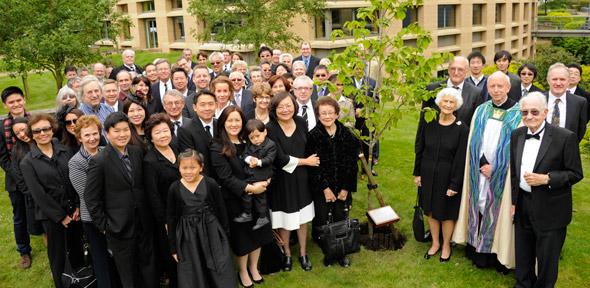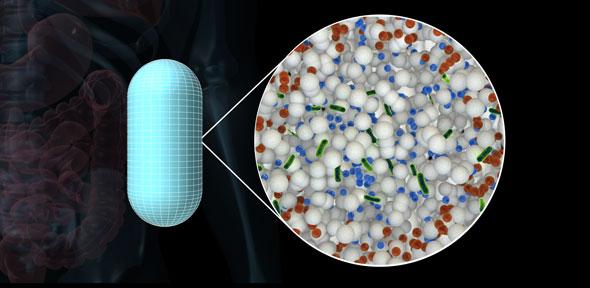A landmark energy-efficiency initiative which aims to reduce the carbon emissions from buildings in Cambridge by 30% before 2050 through a massive, city-wide retrofit scheme, has been launched.
The Cambridge Retrofit Project will function partly as a social enterprise, and partly as a professional delivery service, and is being run by representatives from organisations and businesses across the East Anglian city.
It has set itself the formidable task of supporting the retrofits of approximately 20,000 private homes, and another 20,000 non-residential properties, before the mid-way point of the 21st century. These will include Victorian terraces, modern shopping centres, and the medieval college buildings of the city’s 804-year-old University.
The aim is to make a decisive contribution to the UK’s carbon reduction target of 80% by 2050 in a single move focused on the energy-efficiency of buildings. In the process, the project will also seek to make Cambridge the first city to hit that national objective. From today, businesses and residents are being urged to sign up through a newly-launched website, www.cambridgeretrofit.org, where a full list of the many organisations already involved can also be found.
“Retrofitting” essentially means adding new technologies and features to a building to increase its energy-efficiency and reduce its energy consumption. In practice, that can involve the introduction of measures such as loft and cavity wall insulation, enhanced window glazing, draught-proofing, energy-efficient lighting and improved boilers. The result is reduced energy consumption and carbon emissions, but the programme also aims to build up local businesses, create warmer homes and increase the value of properties.
Making those improvements throughout an entire city – especially one which, like Cambridge, has a daunting range of buildings dating back to the Middle Ages – will require a huge community effort that cuts across public and private sectors.
The total cost of retrofits over the course of the programme is expected to be £1billion. The project team calculate, however, that the energy-savings that result will be worth £1.5billion. The environmental payoff will be even greater, – the city’s carbon footprint, currently 830,000 tons of CO2 a year is expected to decrease at a rate of about 1% a year, eventually falling to about 500,000 tons of CO2 per annum as a result of the retrofit programme.
Since 2012, organisations from across Cambridge have been drawing up plans which will enable the project’s leaders to stimulate demand for retrofits, and then bring that together with financial support and delivery services. The process has involved local planners, building firms, property managers, housing associations, lawyers, engineers, architects and researchers, as well as national government offices and English Heritage.
The project will be handled by a Programme Management Unit, which breaks down into three sub-groups. A “Project Support and Aggregation” arm, run by the energy solutions firm, Day One Energy Services, will oversee the practical business of delivering and financing retrofits. The online consultation service, Consense, will lead the process of mobilising businesses and residents. Finally, supporting research and monitoring will be undertaken by the University of Cambridge’s Centre for Climate Change Mitigation Research and its academic partners.
Overseeing this will be a group of 30 public and private sector partners, chaired by the former leader of Cambridge City Council, Sian Reid. This group will be responsible for monitoring the Unit’s performance and ensuring that it is acting in the best interests of the community.![]()
Professor Douglas Crawford-Brown, Director of the Cambridge Centre for Climate Change Mitigation Research, said: “It’s a huge challenge, but if we are going to achieve the ambitious carbon reduction targets that the UK has set, then we are going to have to learn how to run projects of this scale.”
“Crucially, our plan is to ensure that the business of retrofitting Cambridge’s buildings is demand-driven. Other attempts at initiatives like this have tended to work on the assumption that if a programme to make large-scale changes like this is created, people will use it. Our view is that you don’t start supplying until you’ve got the demand. Our first objective is to get big estate-holders involved.”
Residents, companies and public organisations alike can add their details to the website. Using this, retrofits will be co-ordinated by the Programme Management Unit to keep the costs as low as possible, and to ensure that local businesses and innovators form the project’s principal supply chain.
The initial focus will be on the non-residential sector – the estates of the City and County Councils, property firms, schools, universities and the University of Cambridge Colleges. These organisations are considered prime targets for retrofits because of the cost-saving benefits. “Our approach is that we’re not here to save your soul and we don’t care why you’re doing it, so long as you’re doing what needs to be done,” Crawford-Brown added.
Over time, the project will focus increasingly on the residential sector, working alongside local councils and other organisations to help reduce energy costs in homes.
The Programme Management Unit will also offer all participants optional support through which they can negotiate the cost of retrofitting their properties. For example, in some cases, the Unit will take out an initial, low-cost loan to pay for the retrofit up front, then gradually pay this back by taking a cut of the profit made through energy-savings over time.
Several inaugural “beacon” projects are now being prepared by the project team, with a view to giving the scheme some initial momentum. They will include at least one college building, one commercial building, a local authority office and a University of Cambridge building.
Sian Reid, chair of the project’s oversight group, said: “It is wonderful to see that many Cambridge organisations have already signed up to Cambridge Retrofit. Getting people involved early, and then constantly broadcasting the successes that are happening in Cambridge, is crucial to the success of Cambridge Retrofit. There is a real opportunity here to create nationwide awareness of how retrofits can work for building owners, occupiers and communities. To do that, we have to make Cambridge a living example of best practice.”
Julian Huppert, MP for Cambridge, said: “Cambridge Retrofit has the exciting possibility of allowing everyone in Cambridge to benefit from more energy-efficient buildings, saving money and helping to protect the environment. I am pleased that so many people and organisations are coming together to make this happen.”
For more information about this story, please contact: Tom Kirk, Office of Communications, University of Cambridge. Tel: +44 (0)1223 332300; Email: thomas.kirk@admin.cam.ac.uk


















 “The behaviour of large populations can be hard to predict, but the work has resulted in the validation of fast and accurate computer models that provide a test bed for reprogramming of multicellular systems.”
“The behaviour of large populations can be hard to predict, but the work has resulted in the validation of fast and accurate computer models that provide a test bed for reprogramming of multicellular systems.”












